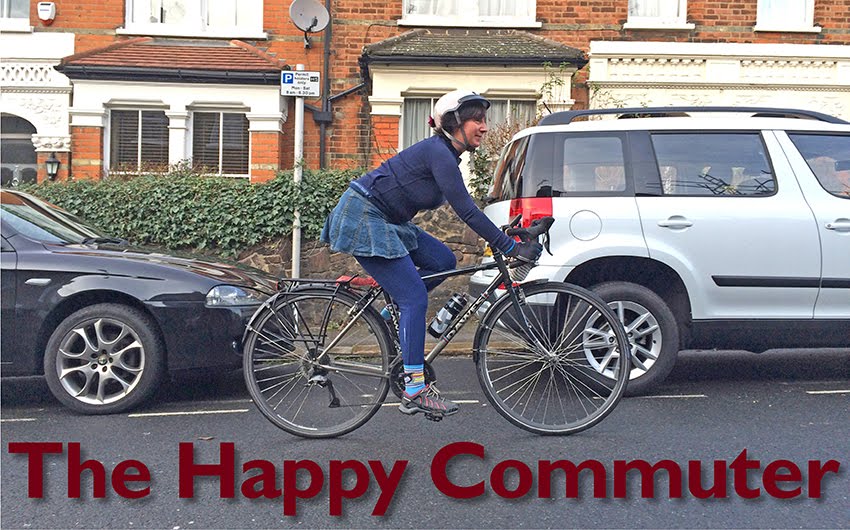Lights and reflectors are a legal requirement if riding at night. They also help keep you safe. Here’s why
I find it really quite shocking how many people I see cycling without lights after the sun has gone down. I know this is happening earlier and earlier at this time of year, which is somewhat depressing, but not having lights is both incredibly dangerous and illegal.
The law is pretty clear on this. Between sunset and sunrise cyclists must have a white front light, a red rear light, a red rear reflector and 4 amber pedal reflectors to cycle on public roads and paths. CTC, the national cycling charity, has further information and explanations.
Everything I’ve read on road safety (and I’ve read a lot) underlines that this is the legal minimum. If you really want to be sure you’ll be seen, you should invest some combination of reflective clothing, wheel reflectors, extra sets of lights or helmet-mounted lights. For one thing, those front and rear lights won’t help you be seen from the side. It’s no good being nicely lit up front and back if a car ploughs into you side-on when you’re crossing a road or hits you when pulling out of a side road – government statistics show that cyclists are particularly vulnerable at junctions.
For accidents that occur at night, the main reasons given included the cyclist wearing dark clothes or not displaying the lightsThe most common reason motorists give for hitting cyclists is that they didn’t see the cyclist. This is described as the ‘looked but failed to see’ problem, and it’s likely to affect cyclists – and motorcyclists for that matter – more than other road users because we’re smaller, making us harder to see. There’s likely to be a psychological element, too: there are more cars on the road, so drivers expect to see them; because they’re not looking for cyclists they don’t see us. Motorists’ mental search image is car shaped, not bike shaped.
It’s notoriously difficult to get accurate statistics on road accidents as studies have shown that an appreciable proportion are not reported; the same research shows that reporting rates for cyclists tend to be lower than for other road users. But some information is available. Far more cyclists are killed or seriously injured (KSI) during the summer months than in winter; most KSIs occur in the light (78%). This is likely to be because far more people cycle when it’s warm, sunny and bight. However, severity is greater during the hours of darkness and a collision is more likely to result in death – 11% of fatalities take place in the dark on unlit roads. For those accidents that occurred at night, the main reasons given included the cyclist wearing dark clothes or not displaying the lights (the third reason was alcohol, but that’s a whole different blog post).
 |
| I have three sets of lights on my bike. Two static and one flashing. |
There’s no doubt that having lights on your bike makes you more visible, and that makes you safer. A motorist might not see a bike, but it’s hard to ignore bright lights shining directly at them. If you want to stay safe on your bike at night, and reduce your risk of being hit by car, you need to have lights and reflective clothing. But don’t just take my word for it. The Royal Society for the Prevention of Accidents (RoSPA) states on its website: “Cyclists riding in the dark without adequate lights and reflectors are at greater risk of being involved in a road accident.”
Sam Jones, CTC campaigns and communications co-ordinator, said: “At CTC we always encourage safe and responsible cycling, and would advise cyclists to use lights and reflectors as required by law.”
I’ve only addressed being seen here, but if you ride at night on badly or unlit roads, you also need to be able to see. Broken glass, rubbish, debris and potholes can all damage your bike or even cause you to take a nasty spill.
It’s simple, really. Lights are a necessary part of your cycling kit. Stay safe, be seen.
 |
| It's not just about lights, though. I also use reflective ankle bands, a reflective vest and have reflective highlights on all my night-time riding clothes. |

 Be seen at night
Be seen at night